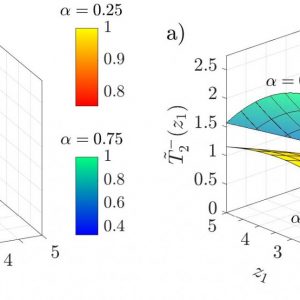River catchments are usually characterized by different land use (cover), climate conditions and geological properties, which result to different flow regime, sediment properties and fluvial morphologies. The classification of fluvial streams according to their geomorphological characteristics have been often performed based on field observations, while empirical relationships were proposed to relate different hydro-morphological properties. In this study, we derive physically-based relationships between morphological characteristics of a river reach to investigate the presence of a quasi-universal scaling ratio among them. Stochastic processes are usually involved in the study of systems when one or more agents in the systems appear to have random fluctuations in time and/or space. While the effects and magnitude of one fluctuation may be explained in a deterministic way according to physically-based or empirical relationships, the presence of multiple fluctuations makes the system impossible to be solvable from a deterministic point of view. Starting from a value between the boundaries, we aim at determining the probability and the average time the flow discharge takes to reach the upper boundary, without having touched the lower one, and vice versa. This will allow to determine the average duration of the raising and the falling limbs of a hydrograph associated to a particular return period.


| Contact: | Giulio Calvani Paolo Perona |
| Keywords: | |
| Duration: | |
| Partners: | – |
| Funded by: | |
| Publications: | Splitting probabilities and mean first-passage times across multiple thresholds of jump-and-drift transition paths |

